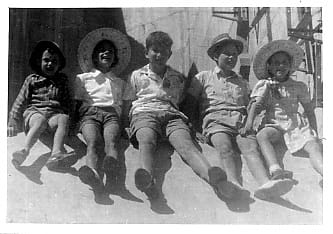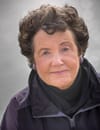A Contribution Not Etched In Stone


Sebakwe Dam the second largest dam in Southern Rhodesia completed 1957. Monitoring progress. Climbing the dam wall in 1956. Height 154 feet high (47 meters). David Hirsch, Wendy Allen, Michael Lannon (of Johannesburg), Brian Hirsch, Diana Hirsch. I was afraid of heights (still am).
A Contribution Not Etched In Stone.
Water was a precious commodity in Rhodesia but Que Que district had several rivers. The challenge was to bring the water to the town so that it did not go thirsty in its long dry spell over the winter and well on into the heat of October before the rains came.
A Contribution Not Etched In Stone.
In 1946, our house, along with Phoenix House, the mine managers residence, were the only two houses that had indoor Elsan toilets. Everyone in Que Que wanted an end to the hodge-podge of septic tanks and the honey suckle bucket brigade. Dad considered it a public health must.
The town was dependent on water from the Kwe Kwe River, named for the sound the local frogs make. It was a small river, only fifty miles long, emptying into the Sebakwe River. It had seven small dams on it along the way. The main dam was at Cactus Poort, where a good catch of bream could always be assured. Good afternoon breezes secured it as the home of the Que Que Sailing Club. The commodore for a number of years was John Adlington, one of Dad’s medical partners.
A new water supply from Cactus Poort to the town had been installed shortly before our arrival in 1946. Everyone knew this supply could not be augmented. The engineering consultants from Johannesburg , Stewart, Sviredov and Oliver had declared it to be the cheapest solution to the town’s needs and that it would be adequate for many years to come.
Dad thought otherwise. A water-borne sewage system would soon tax our water supply, what with the post war industrial growth coming with RISCO (Rhodesian Iron and Steel Works) expansion and Union Carbide’s Ferrochrome plant. A nitrogen fertilizer project based on nitrogen fixation from the atmosphere was also in the offing, amongst other things. The farming riparian rights also needed to be assured for the major irrigation projects being developed.
When Dad became mayor he “staged and chaired a high powered meeting in Que Que, including George Davenport our MP and ex Manager of the G&P Mine, the Director of Water Affairs, the Managers of RISCO and the G&P Mine, the Chairmen of the Farmers and Industry Associations and the Secretary of Local Government. After three hours of debate, the negative decision was reversed. The Minister would recommend to Cabinet to afford us the necessary priority of funding. The wining-and-dining was a post-hoc celebration, appreciated by all.”
The feasibility study of Dutchmans Pool Dam six miles north east of Que Que on the Sebakwe River was finally approved. Again, the prestigious firm of Stewart, Sviredov and Oliver were the consulting engineers.
The family knew something was up when we all piled into the car and headed out one Sunday. It did not happen often. We would not be relaxing somewhere along a river-bank, fishing pole in hand. Along for the ride was an engineer from RISCOM with a roll of survey maps under his arm. Dad had on his army boots and his army canteen on his belt. We were going on a long walk. The thermos of tea, sandwiches and rusks Mom had brought along would come later, “after we had earned it”.
We followed the river through sometimes dense bush, climbed up and down, back and forth over and between the kloofs and kranzes. It was hot and thirsty work.
Dad contested Mr. Oliver’s site which made the pipeline access and filtration plant significantly more costly and would take longer to construct than a much more suitable point a quarter of a mile down river. He was convinced of it.
“How dare you, a doctor of all people, challenge my professionalism!” Mr. Oliver threatened to resign. The council appealed to him to make allowances for over enthusiasm. The town engineer, who actually agreed with Dad, dared not express his opinion. Dad never conceded.
The photograph shows the family and friends sitting on the dam wall of the much bigger Sebakwe Dam, also part of the scheme, which was completed in 1957. It was the second largest dam in the country at the time, covering an area of 9 square miles (2320 ha) with a capacity of 35 billion imperial gallons.
It had been an uphill battle all the way to bring it about.
A national park was established around Sebakwe Dam.
For information on the Sebakwe Black Rhino Trust http://www.blackrhino.org/SBRT%20News%20Autumn%202010.pdf
Many thanks to Tess (nee Banfield) Harris of New Zealand for booklet Que Que Waters and Fish produced by Que Que Angling Society 1953
